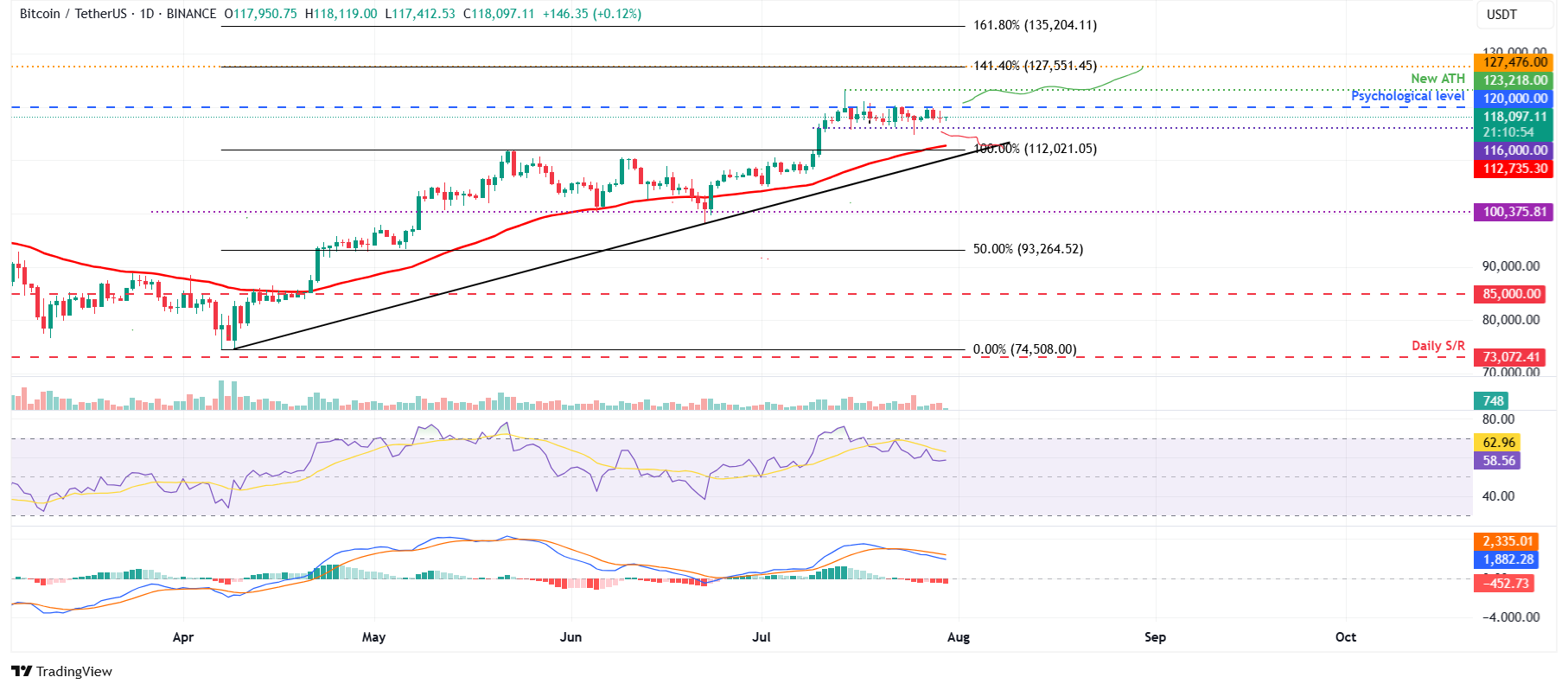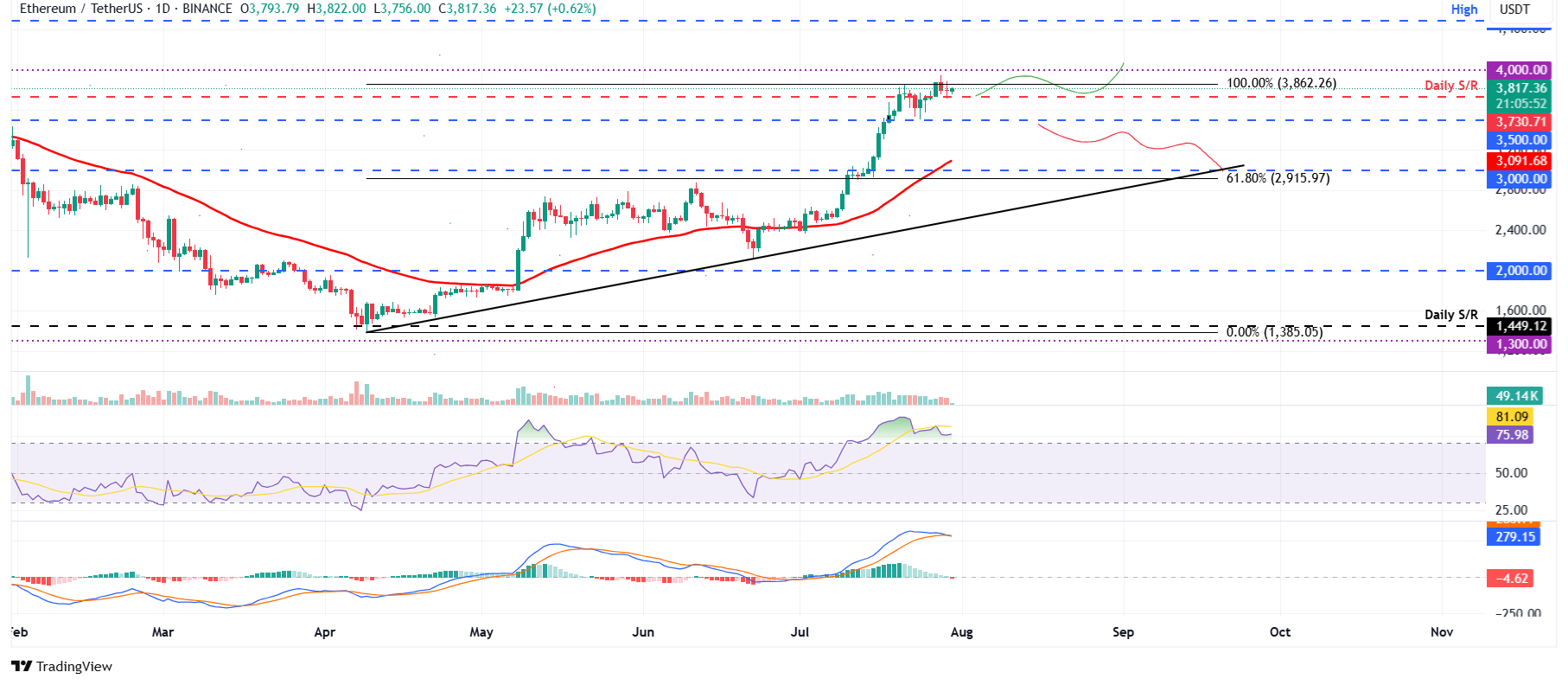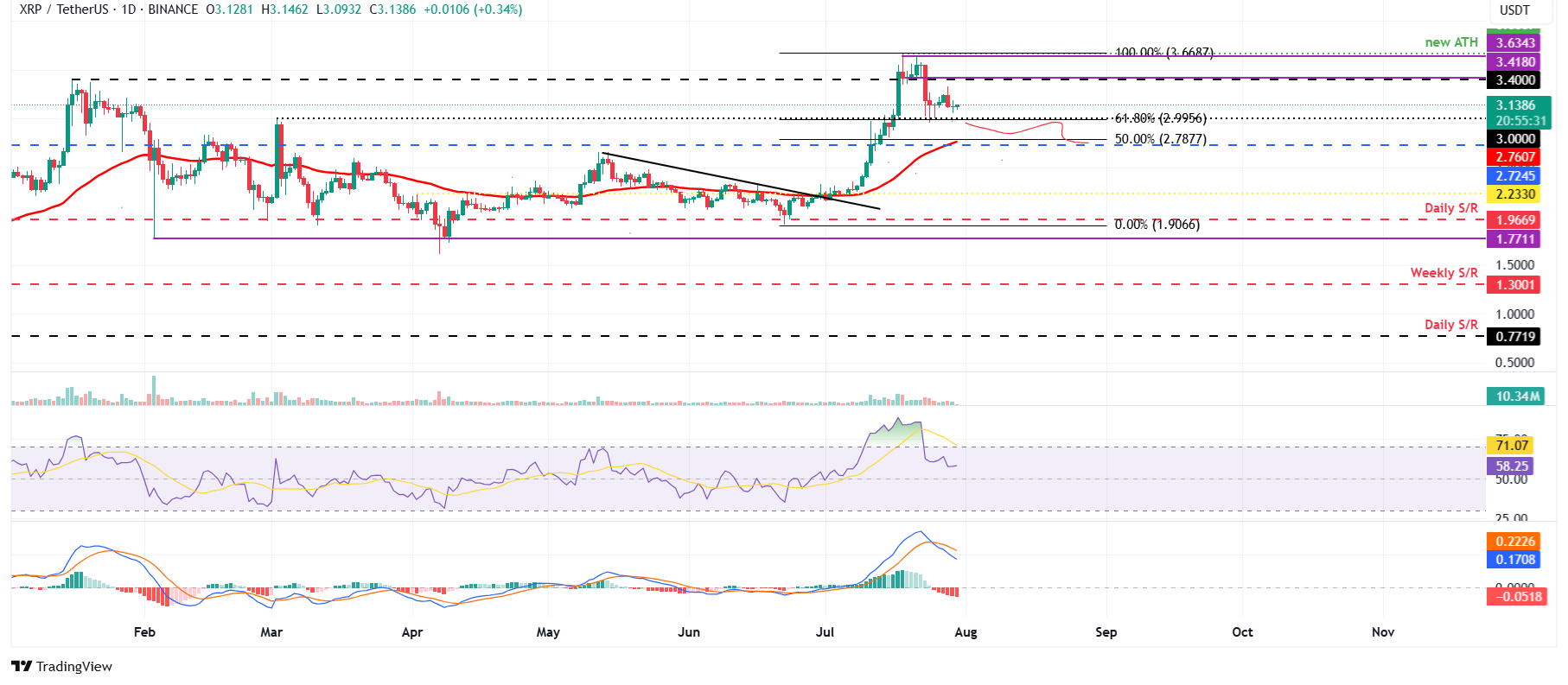Top 3 Price Prediction: Bitcoin, Ethereum, Ripple – BTC, ETH and XRP brace for volatility after Fed decision
- Bitcoin price has been consolidating within $116,000–$120,000 over the past two weeks, indicating market indecision.
- Ethereum price finds support around its daily level of $3,730, signaling potential upside toward $4,000.
- Ripple's XRP holds above its key support at $2.99, suggesting a potential rebound on the horizon.
Bitcoin (BTC) has been trading in a range-bound scenario between $116,000 and $120,000 for the last two weeks, indicating indecision among traders. Ethereum (ETH) and Ripple (XRP) prices are holding above their key support levels, showing signs of rebound. Market participants await the outcome of the US Federal Reserve’s (Fed) interest rate decision on Wednesday, expected to drive volatility across these top three crypto assets.
Bitcoin trades in a range-bound pattern between $116,000–$120,000 range
Bitcoin price has been consolidating in the $116,000 to $120,000 range for the past two weeks, following a new all-time high of $123,218 reached on July 14. At the time of writing on Wednesday, BTC trades at around $118,000.
If BTC falls below $116,000 on a daily basis, it could extend the decline to retest the 50-day Exponential Moving Average (EMA) at $112,735.
The Relative Strength Index (RSI) indicator reads 58 on the daily chart, which is above its neutral level of 50 but points downward, indicating fading bullish momentum. Moreover, the Moving Average Convergence Divergence (MACD) indicator showed a bearish crossover last week, giving a sell signal. The rising red histogram bar below the neutral value also suggests a bearish momentum and a downward trend.

BTC/USDT daily chart
However, if BTC closes above $120,000 on a daily basis, it could extend the recovery toward the fresh all-time high at $123,218.
Ethereum’s daily level at $3,730 remains strong
Ethereum price retested and found support around its daily level at $3,500 on July 24, recovering nearly 8% and closing above the daily resistance at $3,730 on Sunday. At the start of this week on Monday, ETH reached a new year-to-date high of $3,940, but faced a slight decline the next day and retested its daily support at $3,730. At the time of writing on Wednesday, ETH trades slightly above its daily support level at $3,730.
If the daily support at $3,730 holds, ETH could continue its upward momentum targeting its key psychological level of $4,000.
The RSI on the daily chart reads 75, above its overbought level of 70, indicating bulls still have room for a leg higher. However, the MACD indicator shows a start of a bearish crossover on the daily chart, indicating early signs of bearish momentum and a potential downward trend.

ETH/USDT daily chart
On the other hand, if ETH faces a pullback and closes below the daily support at $3,730, it could extend the decline to the next support at $3,500.
XRP could recover if the $2.99 level holds
XRP price broke below the daily support level at $3.40 on July 23 and declined by 11% the following day. However, it retested and found support around its 61.8% Fibonacci level at $2.99 on Friday, rebounding 3.43% during the weekend. At the start of the week on Monday, XRP corrected 3.5% and hovered around $3.12 the next day. At the time of writing on Wednesday, it continues to stabilize at around $3.13.
If the support at $2.99 remains strong, XRP could continue its recovery toward its previous broken support at $3.40.
The RSI indicator on the daily chart reads 58, above its neutral level of 50, but points downward, indicating fading bullish momentum. Additionally, traders should still be cautious as the MACD indicator showed a bearish crossover last week, giving sell signals. The rising red histogram bar below the neutral value also suggests bearish momentum and a downward trend.

XRP/USDT daily chart
However, if XRP closes below $2.99, it could extend the decline toward its next daily support level at $2.72.
Cryptocurrency metrics FAQs
The developer or creator of each cryptocurrency decides on the total number of tokens that can be minted or issued. Only a certain number of these assets can be minted by mining, staking or other mechanisms. This is defined by the algorithm of the underlying blockchain technology. On the other hand, circulating supply can also be decreased via actions such as burning tokens, or mistakenly sending assets to addresses of other incompatible blockchains.
Market capitalization is the result of multiplying the circulating supply of a certain asset by the asset’s current market value.
Trading volume refers to the total number of tokens for a specific asset that has been transacted or exchanged between buyers and sellers within set trading hours, for example, 24 hours. It is used to gauge market sentiment, this metric combines all volumes on centralized exchanges and decentralized exchanges. Increasing trading volume often denotes the demand for a certain asset as more people are buying and selling the cryptocurrency.
Funding rates are a concept designed to encourage traders to take positions and ensure perpetual contract prices match spot markets. It defines a mechanism by exchanges to ensure that future prices and index prices periodic payments regularly converge. When the funding rate is positive, the price of the perpetual contract is higher than the mark price. This means traders who are bullish and have opened long positions pay traders who are in short positions. On the other hand, a negative funding rate means perpetual prices are below the mark price, and hence traders with short positions pay traders who have opened long positions.
